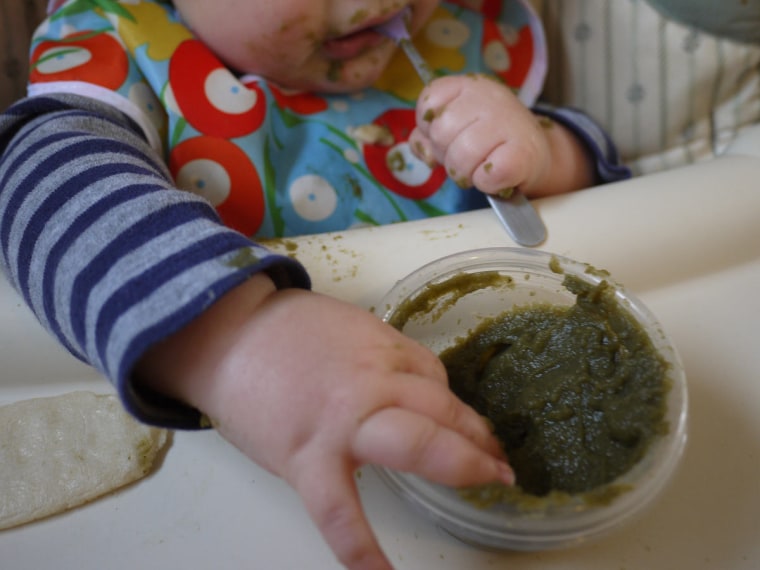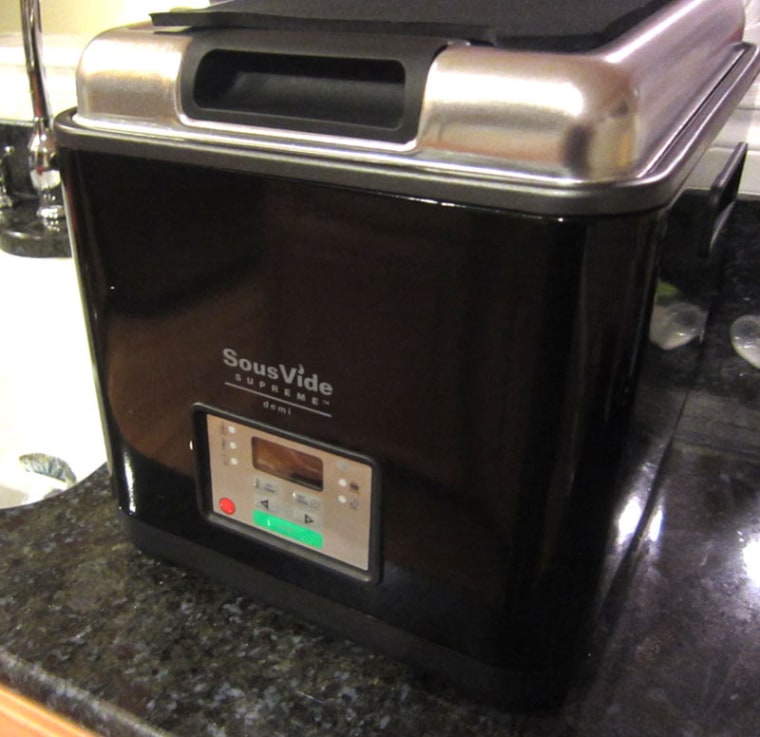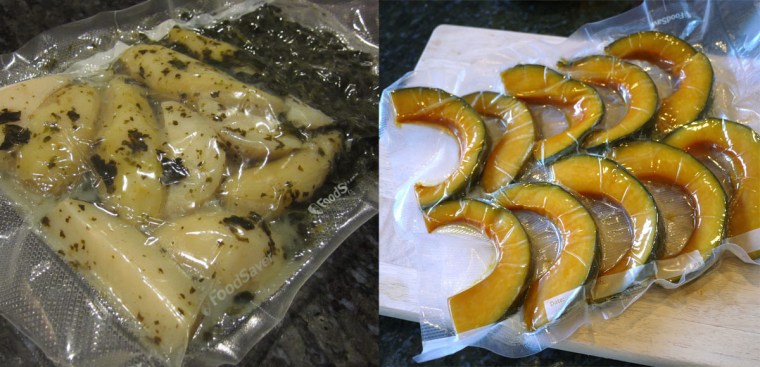
I am a capable cook, but the first time I set out to make baby food I failed. Miserably. So badly that I determined never to try again. It took two and a half years before I gave it another go. I'm happy to report that now, I make most of the food for my little 7-month-old dude, and it's easy, healthy — and even tasty.
Because of all the local-eating, five-ingredient, all-natural "real" food movements, the pressure to make your own baby food is higher than ever. By the time our daughter hit 6 months, I had become convinced that every other parent on the planet was doing it, and things got a bit stressful.
One day, my wife came home with an acorn squash. My assignment: Make pureed squash for our daughter's lunch the next day. I've cooked acorn squash millions of times — it was a standard in my mother's repertoire when I was growing up, and I would assist in the (over) application of butter and brown sugar once the halves came hot out of the oven. But I knew cooking for a baby meant cooking the food straight, with as little seasoning or manipulation as possible.
So I roasted it. Bare.
I didn't use oil or salt or anything. The outer edge of the pulp was dried like fruit leather. I went deep and scooped out what I could. It was a mess, and a waste of squash, and my kid didn't exactly enjoy it either.
Next, I tried boiling the squash — which is actually what many baby-food cookbooks tell you to do — but that turned out soupy and watered down. I'm no nutritionist, but even I could tell at least some of what's good about squash was getting carried away in the orangish water that I poured down the sink. Besides, boiling was just as messy.
Though some people seem to like the Beaba baby food steamer/blender sold at Williams-Sonoma and other high-end stores, I was against buying a $150 piece of equipment specifically for this brief period in my child's life. So from that day on, I swore I'd buy the jarred stuff, and fie on any parent or day care teacher who wanted to look down their noses at me for it. Hey, at least it's organic!

Fast-forward to our second child, entering the solid food stage. Coincidence: For my birthday, at around the same time, I had just bought myself a $300 contraption called a SousVide Supreme. Little did I know that this kitchen nerd's indulgence would turn out to be the ultimate baby-food maker.
"Sous vide" cooking is where you vacuum-seal your meat or vegetables in food-safe plastic (I use a FoodSaver), then immerse it in a water bath heated to a specific temperature until the food uniformly reaches that same heat. This gadget, which looks like a big cooler, provides the precision water temperature.
All plant-based foods cook at the same point, 185 degrees Fahrenheit — it's the temperature required to break down the rigid walls of plant cells. It generally takes a half hour (or less) to cook vegetables in the SousVide Supreme, especially when you precut them. But if you leave the veggies in for a few hours, something magical happens: They turn to total mush. Baby-food consistency, without even a blender.
I put two and two together pretty quickly: Cut up starchy vegetables — potato, yam, kabocha squash, zucchini — or firm fruits — pear, apple, kiwi, banana — seal them up individually or in clever melanges, and then drop the bags in the bath. Two untended hours later, out comes prepackaged baby food, cooked at a germ-killing 185 degrees, and safely sealed away. Cut a corner of the plastic to serve up the paste with no mess. Or leave it in the wrap, storing it in fridge or freezer for later use.

Best of all, I used no additives, and none of the nutrients were boiled away or watered down. Out came the same exact thing that went in, only more friendly to the infant stomach. My new mission is finger foods: I just cut zucchini sticks and keep them in the water bath for just under an hour, so they are still somewhat firm, but easy for a kid with just two teeth to manage. I will next attempt yam fries — minus the frying, of course.
The SousVide Supreme does many other things — you should try the lobster and steak that come out of the thing (just don't share them with your kids). But at this particular moment, it's the vehicle of my culinary redemption, or at least the right tool to help a lazy cook like me feel accomplished. I'm making baby food, something I swore I'd never do, and it feels good.
I'm not saying you should feel pressure to make your own — though if you do, take a look at "Easy Gourmet Baby Food," by Jordan Wagman and Jill Hillhouse, which tends to live up to its name. I'm certainly not saying that you should buy a SousVide Supreme, either — most baby-food recipes require only basic cookware. I am saying that kitchen failures don't go down on your permanent record. If you ever get a chance to revisit one, take it, and make good use of the wisdom gleaned from your past mistakes.
Watch celebrity chef Tom Colicchio talk about the baby food he makes for his son:
Previously from Wilson Rothman:
Wilson is the deputy tech and science editor for msnbc.com and TODAY.com, but whatever free time is left over after working and raising two kids, he spends in his kitchen. Needless to say, it's never enough. You can catch up with him on Twitter at @wjrothman.